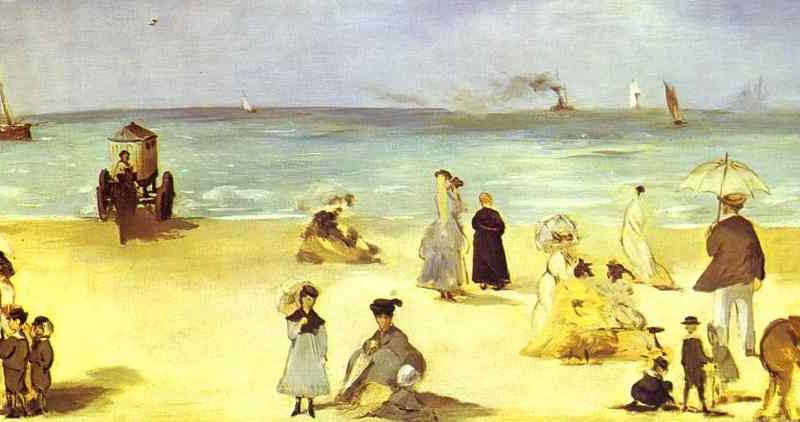An Interest In:
Web News this Week
- April 4, 2024
- April 3, 2024
- April 2, 2024
- April 1, 2024
- March 31, 2024
- March 30, 2024
- March 29, 2024
When was "going to the beach" invented?

Until the 18th century, the seashore was not a place most people would go to relax. In ancient times, it was where you might run into a variety of monsters like Scylla and Charybdis. The shore is also where one might encounter pirates, smallpox, or even a wayward Kraken. Then something changed. Sorbonne University historian Alain Corbin explores this unusual history in the book The Lure of the Sea: The Discovery of the Seaside in the Western World, 1750-1840, one of the sources for a fascinating Smithsonian magazine article about "Inventing the Beach":
Around the mid-18th century, according to Corbin, European elites began touting the curative qualities of fresh air, exercise and sea bathing. Especially in Britain, home of the Industrial Revolution, aristocrats and intellectuals became preoccupied with their own health and hygiene. They viewed workers, whose numbers were multiplying in factories and new industrial towns, as strengthened through labor. By comparison, the upper classes seemed fragile and effete: lacking in physical prowess and destined for decline. The notion of the restorative sea was born. Physicians prescribed a plunge into chilly waters to invigorate and enliven. The first seaside resort opened on Englands eastern shore in the tiny town of Scarborough near York. Other coastal communities followed, catering to a growing clientele of sea bathers seeking treatment for a number of conditions: melancholy, rickets, leprosy, gout, impotence, tubercular infections, menstrual problems and hysteria. In an earlier version of todays wellness culture, the practice of sea bathing went mainstream...
Tracing this remarkable turnaround, the irresistible awakening of a collective desire for the shore, Corbin concludes that by 1840, the beach meant something new to Europeans. It had become a place of human consumption; a sought-after escape from the city and the drudgery of modern life. The rise of trains and tourism facilitated this cultural and commercial process. Travel became affordable and easy. Middle-class families took to the shore in ever-increasing numbers. In sailors jargon, on the beach once connoted poverty and helplessness; being stranded or left behind. Now it conveyed health and pleasure. The term vacation, once used to describe an involuntary absence from work, was now a desired interlude.
"Inventing the Beach: The Unnatural History of a Natural Place" (Smithsonian)
The Lure of the Sea: The Discovery of the Seaside in the Western World, 1750-1840 (Amazon)
photo above by Gray Malin; painting below by Edouard Manet

Original Link: http://feeds.boingboing.net/~r/boingboing/iBag/~3/mKarZyPFvkA/when-was-going-to-the-beach.html


